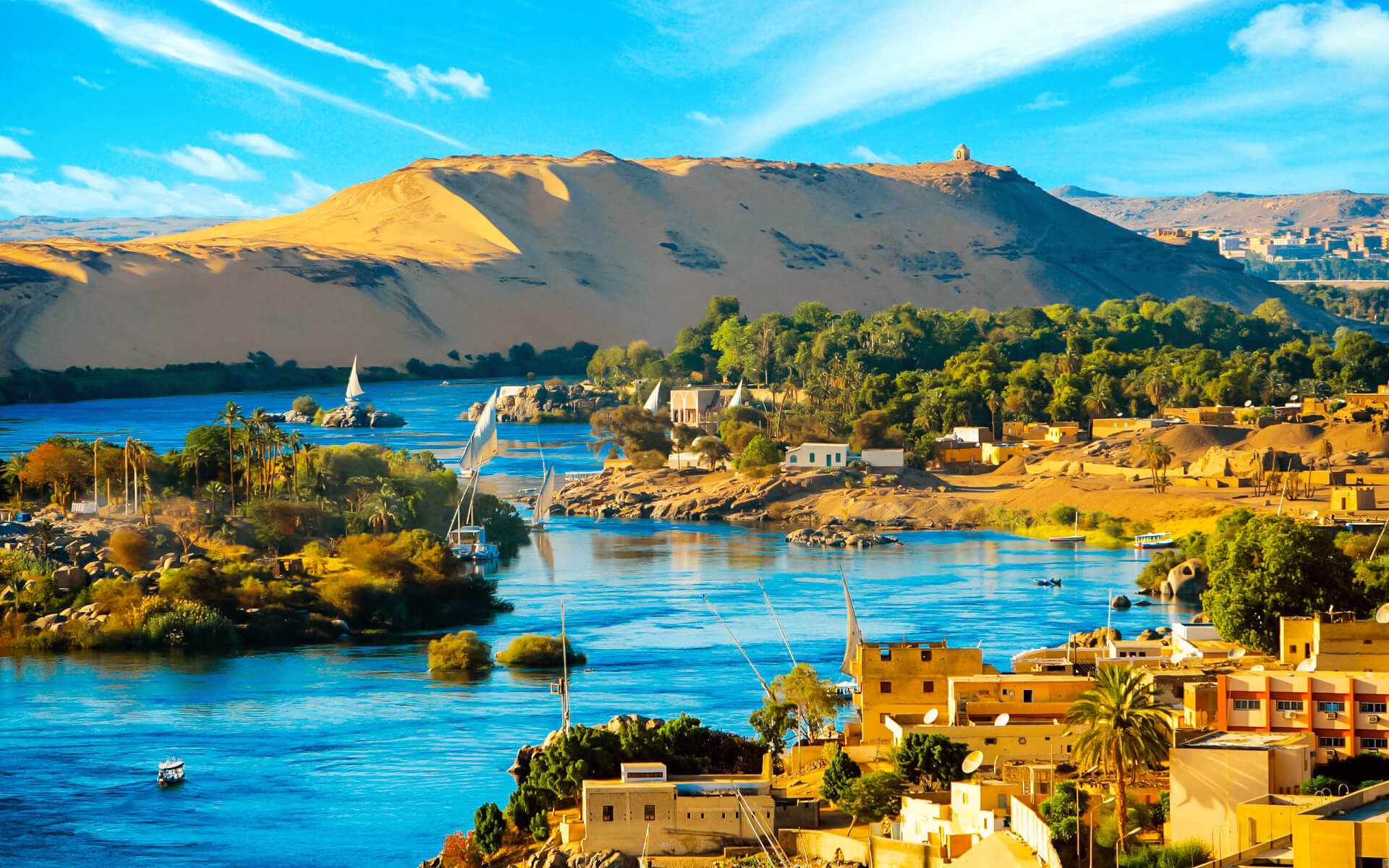Aswan, originally called Assuan, is the capital of the Aswan Governorate in Egypt’s south. Aswan is a bustling market and tourist destination on the east bank of the Nile at the first cataract, just north of the Aswan Dams. The current metropolis has grown to encompass the once distinct settlement of Elephantine Island.
Aswan is far more laid-back and intimate than Cairo and Luxor. Aswan is the smallest of the Nile’s three main tourist destinations. Because it is the southernmost of the three, it has a high population of Nubians, who were largely evacuated from their homeland in the Lake Nasser-flooded region. The majority of the Obelisks visible in Luxor were taken from granite quarries near Aswan. The ancient Egyptians used Aswan as their entryway to Africa.
As with the rest of Egypt, Aswan enjoys a scorching desert environment. Summer days in Aswan and Luxor are the hottest of any city in Egypt. Aswan is one of the world’s hottest, sunniest, and driest cities. During the summer (June, July, August, and September), average high temperatures are consistently over 40 °C (104.0 °F), while average low temperatures are constantly above 25 °C (77.0 °F). Summers in the United States are lengthy, hot, and humid.
During the coldest month of the year, average high temperatures stay over 23 °C (73.4 °F), while average low temperatures remain above 8 °C (46.4 °F). Winters are short, sweet, and sweltering. Winter is quite nice and pleasurable, however summer is painfully hot and humid, despite the fact that desert heat is dry.
Aswan’s climate is exceptionally dry all year, with an average annual precipitation of less than 1 mm (0 in). The desert city is one of the driest in the world, and rain doesn’t fall every year; the last time it rained there was seven years ago in early 2001. With an average relative humidity of just 26%, Aswan is one of the least humid cities on the earth, with a high mean of 42 percent in the winter and a lowest mean of 16 percent in the summer.
Aswan has a highly clear, bright, and sunny environment throughout the year, with little seasonal change, and around 4,000 hours of yearly sunlight, which is quite near to the maximum potential sunshine length. Aswan is one of the world’s sunniest cities.


